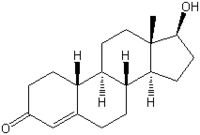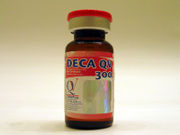Say it ain't so ... Everybody?
Now it's fair to declare that there is rampant, widespread use of steroids by major league baseball players.
The announced figure of "5 to 7 percent" is the tip of the iceberg. Those are the few fools stupid enough to get caught--and by their numbers set in motion a torrent of shame: public anger, mandatory testing, identification of users and possible suspensions and fines. Any half-bright steroid user beats the tests, which must be Why the players union agreed to any testing at all; the suits in the commissioner's office and in union headquarters must have thought, "We'll throw the public a bone because, hey, no way 100 of our guys are so dumb they'll use juice that hangs around in their system when they know a test is coming."
Now it happens, comically and sadly, that baseball's leaders not only overestimated the intelligence of players, they underestimated the zeal with which players inject/ingest/apply their muscle-building/performance-enhancing juice/pills/gels.
What a mess.
Worse than a mess.
It's a scandal bigger than Barry Bonds' pectorals.
Worse than a scandal, it's a disgrace the size of Sammy Sosa's deltoids.
Worse than a disgrace, it's baseball greatest collective sin since eight members of the White Sox conspired with gamblers to fix the 1919 World Series. Commissioner Bud Selig and his lieutenants can spin it. Players association leaders Don Fehr and Gene Orza can spin it. They all can agree to say it's a tiny percentage of players and it's a step in the right direction, blab, blah, blah.
Great damage has been done. It's damage that won't be repaired for years. It's going to get worse before it gets better, much worse. This is a systemic failure that has created, in essence, a breach of contract with fans who pony up good money to see games contested on a level playing field.
Now every player is suspect, every base hit suspect, every strikeout. In a game that defines its essential fairness and timeless beauty by statistics and sanctifies players according to their numbers, what now? Does 73 mean anything now? What to do with a man who three times in four seasons hit more home runs than Babe Ruth's 60?
"They've opened a Pandora's box,' says Dr. Charles Yesalis, a Penn State professor, international expert on steroids in sports and such a baseball fan that he once said, "I'm bothered by the fact these chemically enhanced athletes are breaking records of my idol, Mickey Mantle, where my strong belief is these clowns couldn't carry Mantle's jockstrap." Yesalis now says, "What are they going to do, put two asterisks on everything that happened in the 1990s and forward? Maybe they should because what this testing confirms is what we started seeing as long ago as 1994: a change in performance along with a change in 'body habitat,' as we call it."
That is to say, players' bodies are no longer the lean, strong, healthy products of Wheaties. More likely they're cartoonish sculptures of muscle mass made by Deca-Durabolin.
For almost a decade we had only our eyes and common sense to tell us we were being cheated, that the players were no longer simply superb athletes superbly conditioned but were superb athletes fed massive doses of athlete-helper.
We suspected as much because other sports long had attested to steroids' performance benefits (and life-shortening health risks, secondarily) by outlawing them. But not baseball. There the players union, arguing that privacy trumps all, would not abide regulations concerning steroids or other performance-enhancing drugs.
Well. Can't you hear a kid baseball player? "If steroids aren't against the rules, and if they're not going to kill me this very second, why not use them?" Especially if the tradeoff is a gain in strength, endurance, quickness and tall piles of money.
Then came revelations supporting, at least in part, what our eyes had seen and what the record books suggested: Never had baseballs been hit so hard, so far, so often. The great sportswriter Red Smith once said, "Ninety feet between bases is the nearest to perfection that man has yet achieved." But now, with steroids in vogue, baseball's sacred geometry is endangered--as a pair of sensational confessions and accusations made clear in the last year and a half.
Two players good enough to have been their league's MVPs, Ken Caminiti and Jose Canseco, admitted their own use of steroids and estimated baseball's users at anywhere from 50 percent to 80 percent of all players.
We saw it coming, and how could we not? It practically advertised itself in flashing bright lights: "Curious Developments Ahead."
Curious that Mark McGwire lost touch with home runs after abandoning his security blanket "nutritional supplement."
Curious that Sosa resorted to a corked bat this season and hit 40 home runs, his fewest since 1997, a full 18 under his average for the five previous years.
Curious that Roger Clemens, full of fire at age 41, has decided to retire.
Curious that Jason Giambi this year seemed smaller, played smaller.
And won't we be curious next season? It will be Bonds' first after being called, along with Giambi and other high-profile athletes, to testify to a grand jury investigating a San Francisco Bay area company suspected of designing steroids undetectable by tests.
To think, all these years we've argued about Pete Rose.
Next to this elephant, Pete Rose is an ant.
DAVE KINDRED
dkindred@sportingnews.com
COPYRIGHT 2003 Sporting News Publishing Co.
COPYRIGHT 2003 Gale Group



